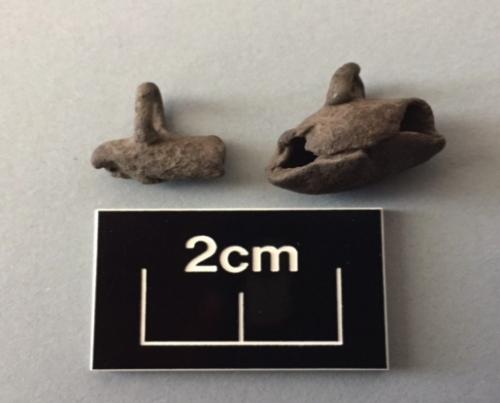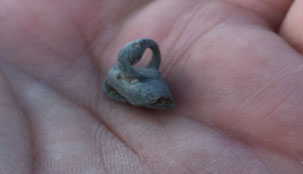
Nick J. asks: How would that strap have been attached with a cold hammer technique?
Well, we don't know exactly but it is assumed that you would flatten out the copper with cold hammer technique into a thin sheet, place a leather strap on top of it and then roll the sheet around the strap. As Chris Adams have found out, the copper bells and the beads are typically found in the plazas and other communal areas, indicating that people were wearing them as decoration (perhaps attached on leather straps) during communal events and ceremonies.

This question is in response to the blog post:
The Office of Contract Archeology (OCA) fieldwork on White Sands Missile Range (WSMR) has resulted in the discovery of rare prehistoric artifacts made of copper. The archaeological team visited three of the major El Paso Phase Jornada Mogollon adobe roomblock sites on WSMR. Using the latest metal scanning technology, Adams and his colleague Charlie Haecker discovered five native copper nuggets, three copper beads, and one copper bell. Adams’ on-going work in the Mimbres Valley of western New Mexico has shed light on the fact that the Mimbres where exploiting native copper nuggets from the Santa Rita Mine area during AD 950-A.D. 1130.
All three beads appear to have been made using the cold-hammer technique, made of raw pieces of copper hammered into thin sheets then rolled into burrito-like forms called beads (Figure 1). The prehistoric copper beads are extremely rare in the American Southwest with the only comparative specimens being recovered in 1919 by archaeologist Earl Morris from the Aztec Ruin in northwestern New Mexico. Almost 100 years later, three more beads are now known to have come from the two of the El Paso phase village sites.
